Shrimpy shrimp!
Hello, everyone!
I'm Kitano, and my friend loves shrimp—before I knew it, I did too!
Just how many people has that plump, juicy flesh captivated?
By the way, have you all checked out the info on McDonald's new products?
The name is “Plump Shrimp Puri-O,” and it's such an adorable product with a chance to get a heart-shaped one too!
McDonald's has its classic Shrimp Filet menu item, but imagining how delicious that is makes me wonder just how tasty this new product will be—my expectations are soaring! 🦐
This time, to get you shrimp lovers excited, we've put together a special feature on shrimp dishes.
This article showcases the creator's personality more than usual TasteTune pieces, but I've challenged myself with a different style. I hope you'll enjoy it all the way through.
Shrimp in Chili Sauce
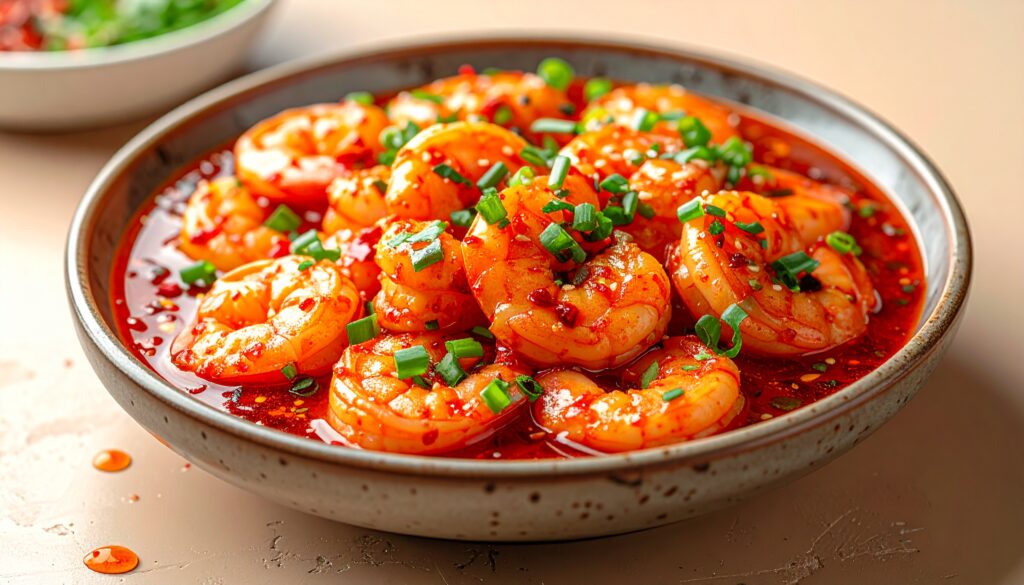
Surprisingly, TasteTune has featured quite a few shrimp dishes in our music and articles so far.
Shrimp was used in dishes featuring seafood variations, including tempura and ajillo.
And from among the many shrimp dishes, the one chosen as the main feature of this article is shrimp chili!
China and Japan
Ebi Chili is a dish originating from China, adapted from a Sichuan-style shrimp dish called “Gan Shao Xia Ren” to suit Japanese tastes.
However, the reality is that detailed documentation does not exist, so it is rarely possible to state definitively that this is the case.
When writing articles, this kind of thing happens all the time, so as someone creating them, it's frustrating to see the quality slip (Oh dear).
Until the time machine is built, the truth remains shrouded in darkness...
The flavor of shrimp chili
Now, as for the crucial taste of that shrimp chili, I think it's incredibly addictive.
The shrimp's natural texture blends with a spicy sauce reminiscent of sweet bean paste, creating a unique flavor profile unmatched by other dishes.
Japanese shrimp chili is characterized by its mild spiciness and pronounced sweetness.
However, the original dry-fried shrimp dish is characterized by its low sweetness, with its aroma and spiciness emphasized by spices like doubanjiang and_ chili peppers.
You could say the two have completely opposite flavors.
How to Make Shrimp in Chili Sauce
Ingredients (for 2 people)
- Peeled shrimp (large/veins removed)... 200g
- Salt... a pinch
- Pepper... a little
- Potato starch... 1 tablespoon
- Salad oil... 2 tablespoons
〈Aromatic Vegetables〉
- Garlic (minced) ... 1 clove
- Ginger (finely chopped) ... 1 knob
- Green onion (finely chopped) ... 1/2 stalk
〈Combination Seasoning〉
- Tomato ketchup... 3 tablespoons
- Doubanjiang... 1 teaspoon
- Sake... 1 tablespoon
- Chicken broth...100ml
- Sugar... 2 teaspoons
- Soy sauce... 1 teaspoon
〈Finishing〉
- Water-dissolved potato starch... 1 teaspoon potato starch + 2 teaspoons water
- Sesame oil... 1 teaspoon
How to Make (Serves 2-4)
- Preparation
- Peel the shrimp, remove the veins, and season lightly with salt and pepper.
- Coat with potato starch (1 tablespoon).
- Stir-fry
- Heat 2 tablespoons of salad oil in a frying pan, add the shrimp, and lightly stir-fry both sides.
- Once the color changes, remove it once.
- Sauté the aromatic vegetables
- In the oil left in the skillet, sauté the garlic, ginger, and green onions over low heat to release their aroma.
- Add seasonings
- Add tomato ketchup, doubanjiang, sake, chicken broth, sugar, and soy sauce, then bring to a boil.
- Finish
- Add the shrimp back in and toss everything together.
- Thicken with potato starch dissolved in water.
- Drizzle sesame oil over the top to add fragrance, and it's done.
Shrimp Sandwich
This is a special feature, so there's still more to come!
Next up is a shrimp sandwich!
I'd like to share something I ate recently that was delicious.
By the way, what I ate was a fresh one with shrimp, avocado, and cabbage.
I bought it at the bakery attached to the supermarket.
The shrimp and avocado sandwich itself seems to be very popular, and I feel like I see it in various places, especially cafes.
The flavor of the shrimp and avocado sandwich
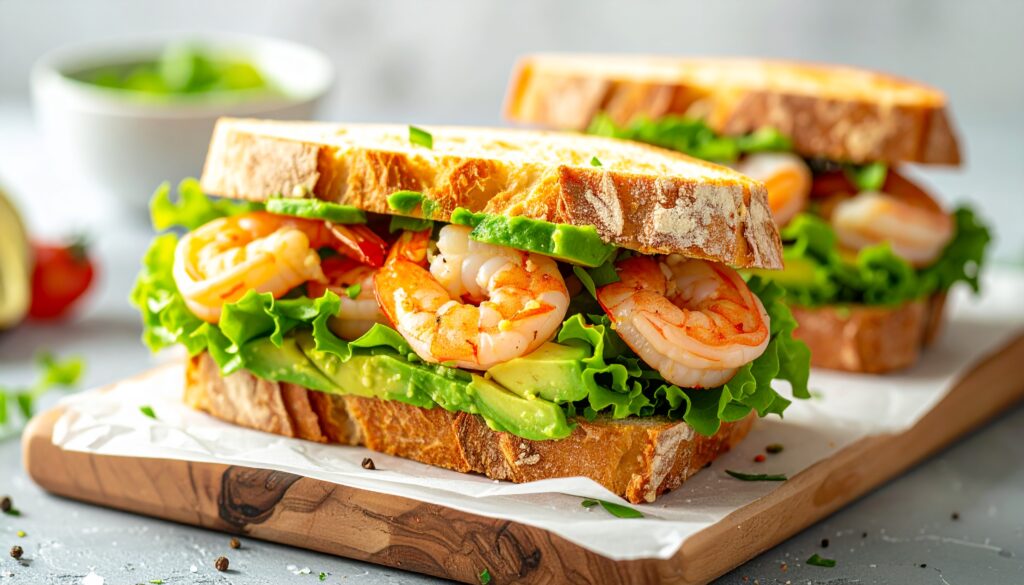
Shrimp boiled to retain a firm, springy texture while offering a clean, refreshing taste.
Avocado creates a creamy, mellow sweetness and richness.
Eating these two together allows the shrimp's refreshing taste to complement the avocado's richness.
And adding mayonnaise or chili sauce for a flavor change is quite the treat!
Standard Shrimp Sandwich
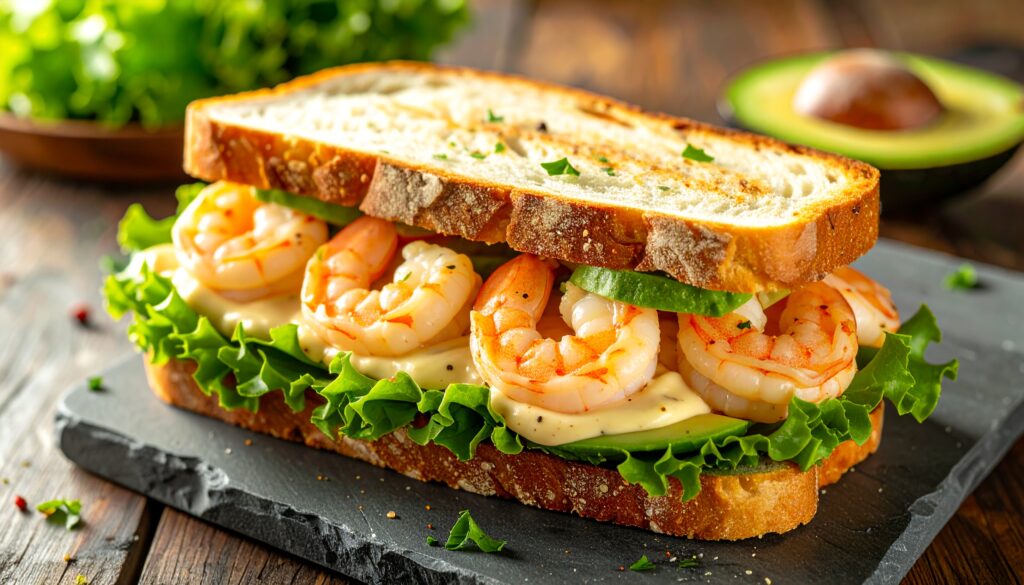
Besides shrimp and avocado sandwiches, there are many other types of shrimp sandwiches you often see.
Here we introduce the shrimp mayo sandwich!
The shrimp mayo sandwich combines boiled shrimp and_ mayonnaise between bread.
Everyone might have said it at least once!
The sweetness of shrimp pairs perfectly with the smoothness and tanginess of mayonnaise!
Another appeal is the flexibility to add vegetables for a salad-style dish or boiled eggs for more volume.
In Japan, it is offered at various locations including bakeries, cafes, convenience stores, and supermarkets.
If you've never tried it before, you should definitely give it a try at least once!
Unique Shrimp Sandwich

Here we introduce the shrimp tempura sandwich!
The shrimp fry sandwich is a sandwich that features a large shrimp fry placed whole between slices of bread.
This dish incorporates the “katsu sandwich culture” and is a quintessentially Japanese dish.
The crispy coating and plump shrimp combine with rich tartar sauce for a satisfyingly hearty and delicious taste.
Additionally, you can enjoy the difference in shrimp cutlet sandwiches based on the type of bun used.
Sliced bread
Fluffy and sweet, it gently envelops the ingredients.
It is homey and easy to eat, and is often used as a staple in various sandwiches.
Baguette (French bread)
Crispy on the outside, soft and fluffy on the inside, with a satisfying texture and rich aroma.
This helps bring out the juiciness of the shrimp.
It pairs well with gourmet sandwiches and is used in po'boys and banh mi.
Roll bread / Koppe bread
This bread is exceptionally easy to eat, with its soft texture and subtle sweetness.
It's great for kids' meals and light snacks, but it also pairs perfectly with fried foods like shrimp tempura and_ shrimp cutlets!
Jambalaya

Finally, we'll switch things up and introduce jambalaya from Louisiana in the American South!
Jambalaya is a rice dish cooked with vegetables, meat, seafood, and spices.
Doesn't this feel like déjà vu?
That's right.
This dish is said to have its roots inJollof rice.
Jolof rice is a rice dish cooked with tomatoes and spices, widely eaten in West Africa.
We previously featured it on TasteTune.
Additionally, it is said that Spanish paella also has its roots in this dish.
It is a cuisine that developed through the blending of French immigrant (Cajun), African, and Caribbean culinary traditions.
Jambalaya flavor
The flavor of jambalaya is characterized by its complex and robust taste.
The crispness, the savory flavor of aromatic vegetables, the acidity and richness of tomatoes, the umami of meat and seafood.
It's a flavor unique to Louisiana's diverse culture, shaped by influences from France, Spain, Africa, and beyond.
Jolof rice was characterized by its simple yet robust flavor.
However, jambalaya's defining characteristic is its unique flavor, a fusion of ingredients from both land and sea.
Types of Jambalaya
Jambalaya is broadly categorized into two types: “Creole-style (red jambalaya)” and “Cajun-style (brown jambalaya).”
This time, I'll briefly introduce those two types!
Creole-Style Jambalaya (Red Jambalaya)
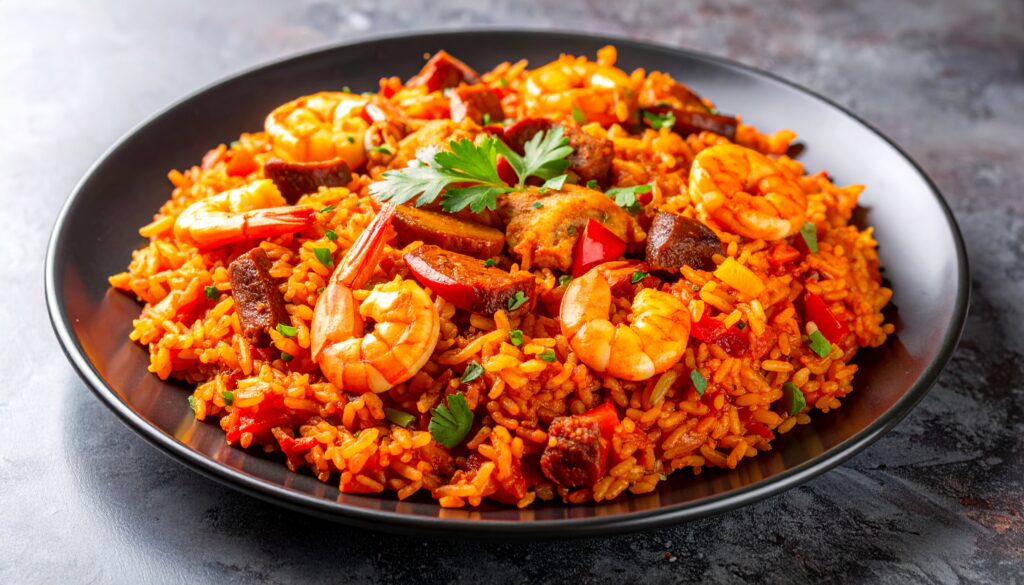
Its characteristic feature is that it takes on a reddish hue due to the use of tomatoes.
The base flavor comes from the acidity and sweetness of tomatoes, offering a relatively light and refreshing taste.
Seafood such as shrimp and crab, as well as sausages, are often incorporated.
It is said to have originated from the “Creole culture” of urban areas such as New Orleans.
Therefore, it is also a variation strongly influenced by France, Spain, Africa, and the Caribbean.
Cajun-Style Jambalaya (Brown Jambalaya)
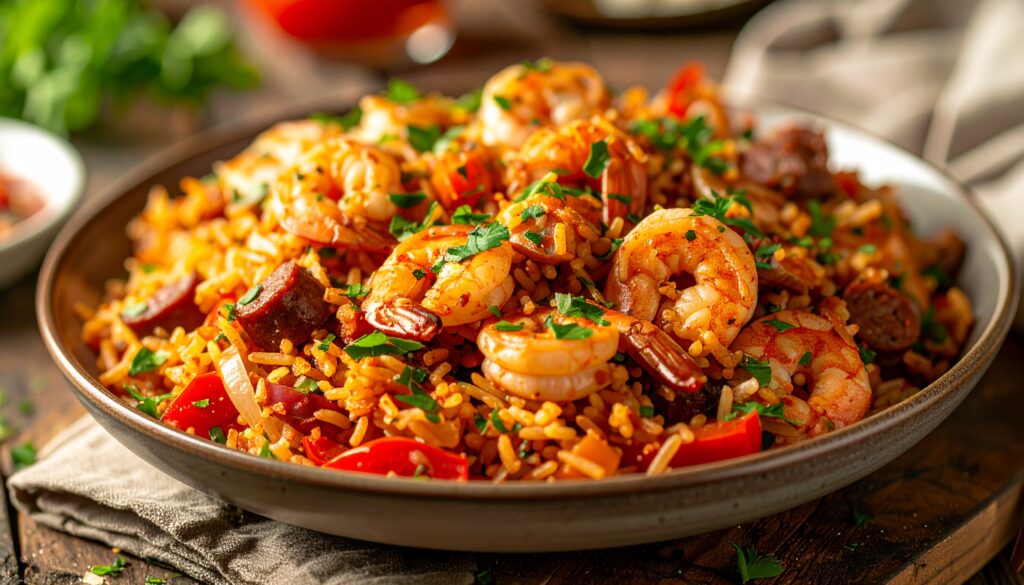
Since it doesn't use tomatoes and instead thoroughly stir-fries meat and vegetables before cooking the rice, the entire dish turns brownish.
Primarily using chicken, pork, and sausage, it has a rich and smoky flavor.
The meat's savory flavor stands out more than in Creole-style dishes.
Another difference is that it originates from Cajun culture, which traces its roots to French immigrants.
Their cuisine, developed in wetlands and rural areas, is characterized by its use of preserved foods and locally sourced ingredients.
That's why we use a lot of preserved foods like sausages and_ pork.
Other variations
Seafood Jambalaya
This seafood-focused variety, generously featuring crayfish, crab, and whitefish, is popular in coastal areas.
Sausage Jambalaya
Andouille (smoked sausage) takes center stage.
This one is also smoky and satisfying.
Mixed Jambalaya
This luxurious variation combines multiple ingredients such as chicken, sausage, and shrimp.
Vegetable Jambalaya (Vegetarian Version)
This is a healthy, health-conscious variation made with vegetables and spices, without using meat or seafood.
Summary
How was it?
This time, we've put together a special feature centered around shrimp dishes.
I believe I was able to convey the taste and appeal of each dish to everyone.
By the way, everyone, how did you find the tone of this article?
I tried writing this with a friendlier tone than before.
Since we're just introducing the history of cooking and such, maybe it's best to avoid casual chatter and unnecessary information?
Based on this idea, I sometimes deliberately write in a monotonous tone, though I haven't quite settled on it yet.
I'd love to hear your thoughts and feedback, so please feel free to share them on Twitter or in the comments.
Also, I'll be writing articles about each of the dishes introduced this time!
For more in-depth information, follow TasteTune and stay tuned!
Thank you for watching until the very end!!

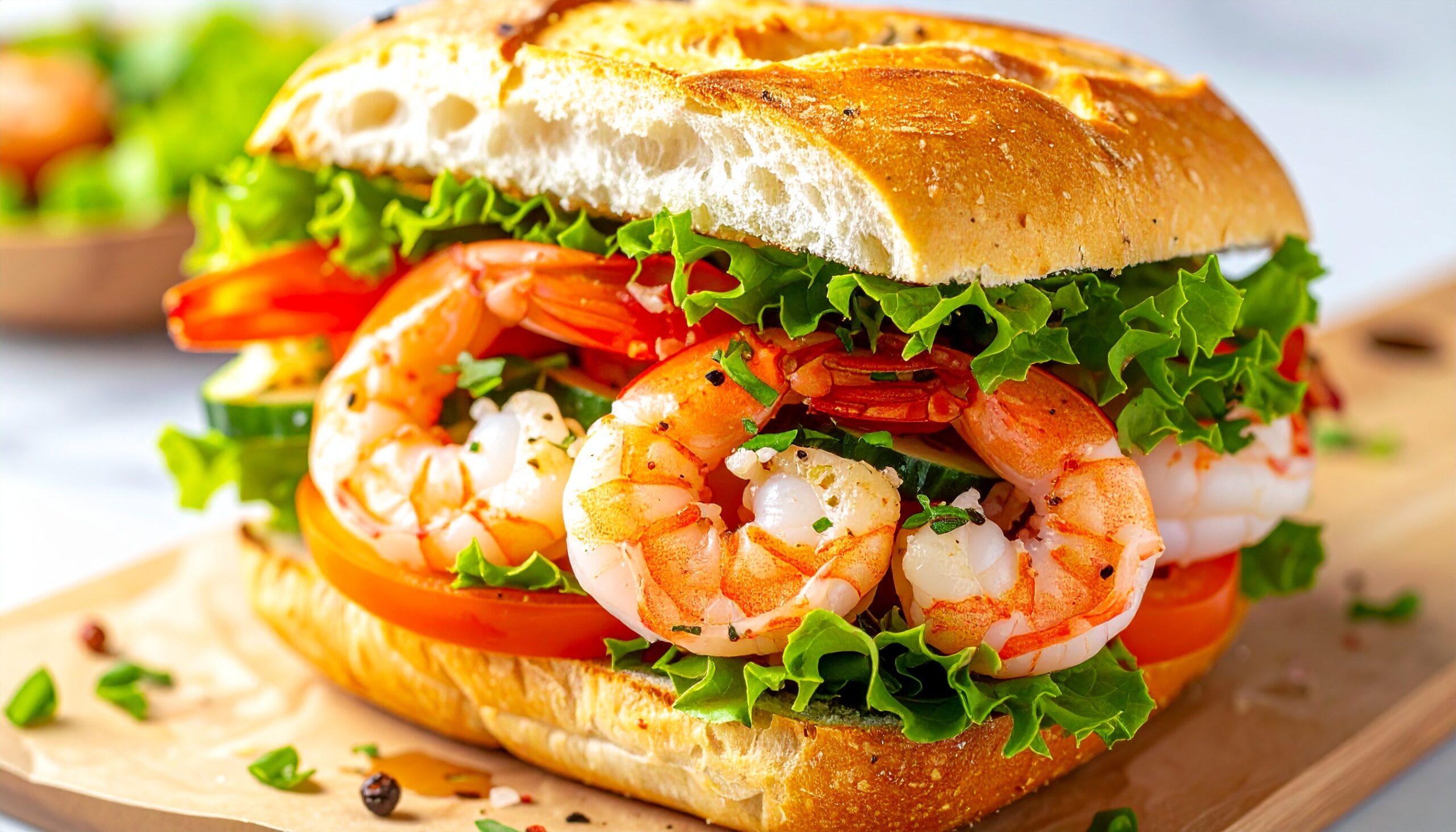


Comment